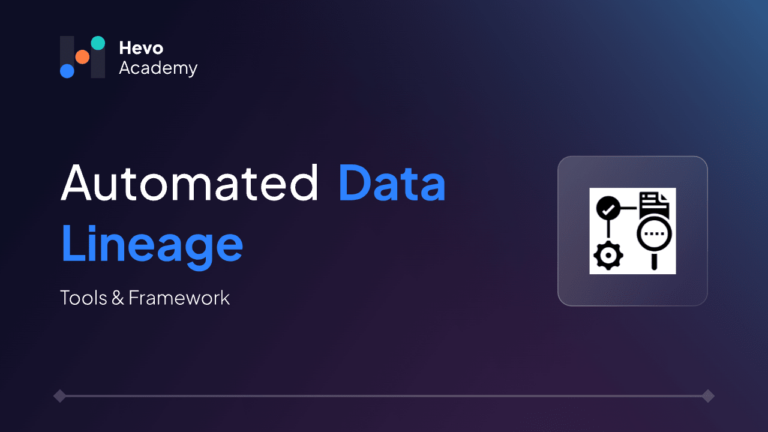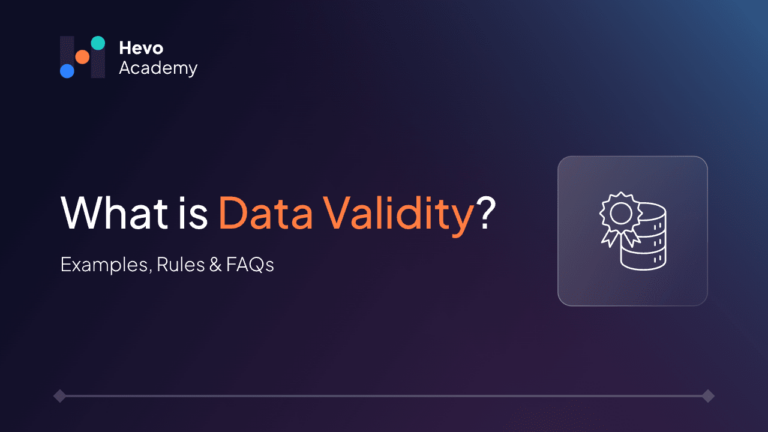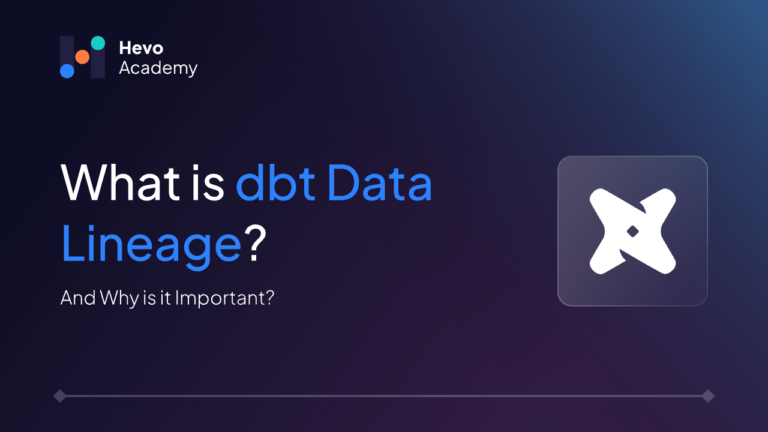Can you guess how much data we have in the world? In 2021, it was estimated that the overall amount of data in the world is 79 zettabytes1 (you probably don’t even know if the word zetabyte exists). And the amount of the data is estimated to be doubled by 2025.
Table of Contents
Did you know that 90% of that data2 has been created in just the last two years? Businesses face a huge challenge: How do we keep track of it all? More importantly, how do we know it’s accurate? That’s where data lineage and data provenance come in. Many people think that data management is just about storing vast amounts of information; this is just a part of it. It is also about understanding where your data comes from, how it changes and ensuring its integrity throughout the process.
Every business relies on data to drive decisions. They aim to optimize their organizational processes and gain competitive advantages. Hence, as data grows more complex and big, effective data management becomes more critical than ever. Data lineage and provenance concepts may sound foreign and complex; however, these are essential tools to make your data trustworthy. A solid data lineage implementation guide should outline the differences between lineage and provenance, clarifying how each contributes to data tracking and compliance. This blog will explore the concepts of data lineage and data provenance, provide a data lineage vs data provenance comparison, understand their importance, and see how businesses use them to stay ahead in the tech industry.
What is Data Lineage
Data lineage is the journey that data takes through all the processes from transforming to visualizing. It is like a map that can track data as it moves in the ocean. Data lineage is important because It answers this significant question that businesses always ask: how and why has the data changed over time?

Why is Data Lineage Important?
A retail company processes thousands of transactions daily. If the finance team finds that sales figures in reports fail to match up, they can investigate upstream to find out where the problem caused the reports to show incorrect numbers. Bad data causes bad reporting, but a clear lineage can fix abnormalities. A large financial institution like JP Morgan wants to ensure that its data is compliant with the regulations such as the Basel III framework. They can track how customer transactions are processed, transformed and stored. Data lineage can allow them to track the data changes and apply troubleshooting faster and easier. It helps in mitigating risk while making changes in the processes.
Users can verify that their data sources are reliable. Data lineage shows if data was properly transformed and loaded. Data lineage is critical for making strategic decisions based on accurate data.
So if we summarize the importance in three points:
- Compliance and Auditing
Data lineage helps in maintaining audit trails in organizations that meet the compliance requirements of regulatory bodies. This is especially critical in finance or healthcare bodies where they handle sensitive data. - Data Quality
Data lineage maintains the data quality and accuracy. It allows teams to identify the root causes in the processes. - Impact Analysis
Data lineage enables teams to analyze the impact of changes in the processes. If a company is planning to update its ETL pipeline, they can check how those changes will affect downstream systems by analyzing the data lineage.
Are you confused about which tool to choose for your data migration? Hevo’s no-code platform makes it easy to track your data’s journey with precision. Whether you’re managing complex data pipelines or ensuring regulatory compliance, Hevo has you covered. Try Hevo today and empower your team to:
- Risk management and security framework for cloud-based systems with SOC2 Compliance.
- Always up-to-date data with real-time data sync.
- Seamlessly integrate, transform, and load data from 150+ sources with zero coding.
Take control of your data with Hevo!
Get Started with Hevo for FreeWhat is Data Provenance?
When you are working on datasets , you may think of questions like “Where did this data come from?” or “Has this data been altered since its creation?” or “Who altered this data?”
While data lineage traces the movement of data, data provenance focuses on the origin of that data.
Data provenance is the historical record of data that originates from its source as it moves through the transformation and other processes to its destination. Data provenance systematically documents the history of data and its movement through numerous processes to safeguard the reliability and accuracy of data inside an organization. By protecting the authenticity and correctness of data, this past record aids in regulatory compliance by ensuring that businesses adhere to industry and legal requirements.
Why is Data Provenance Important?
Data provenance improves data management accountability and transparency. It is critical to ensure that the data is authentic, especially in fields where data is sensitive.
- Data Trust and Integrity
Data provenance ensures the authenticity of the data. You can know the source of your data and see whether it has been altered. This is very critical in sectors like healthcare or scientific research where data can be misused which can lead to serious outcomes. Even after the data has been loaded and altered along the pipeline, there’s a good probability that you won’t be able to trust it if you can’t trust the data source. - Pipeline Transparency
Data provenance gives visibility to the pipeline. It provides an extra layer of transparency into how data has been transformed at various stages.
- Regulatory Compliance
Data provenance makes sure that the data is accurate and in accordance with the legal and regulatory requirements. Industries such as healthcare and legal are required to maintain stringent records of how data has been generated and used.
There are several great tools for data provenance such as CamFlow Project, Kepler scientific workflow system, Linux Provenance Modules and Open Provenance Model.
For instance, a large pharma company like Pfizer needs to ensure that data is well-documented in the drug development process. Data provenance helps them record each step of the production process from sourcing raw materials to final testing. Data provenance also ensures that Pfizer is in compliance with FDA regulations.
Data Lineage vs Data Provenance
As we have discussed the concepts of data lineage and data provenance, let us break down the distinctions between them.
| Aspect | Data Lineage | Data Provenance |
|---|---|---|
| Focus | Tracks the flow of data through the systems | Focuses on the origin and historical context of the data |
| Key Purpose | Tracks the flow of data through the systems. | Focuses on the origin and historical context of the data. |
| Granularity of Data | Helps us to understand the movement and transformations of data | Focuses on the authenticity and integrity of data. |
| Use Cases | Auditing, data quality assessment and compliance | Authenticity and regulatory compliance |
| Tools Available | Talend, Openmetadata and Apache Atlas | CamFlow Project, Kepler scientific workflow system, Linux Provenance Modules and Open Provenance Model. |
| Timeframe focus | Focuses on the past, present and future states of data | Focuses on the past and history mainly |
| Scope | Focuses on entire data pipelines | Emphasizes more on datasets and data sources. |
| Decision Making | Assess the impact and risks of changes in the data | Ensures that decision making is based on accurate data |
As you can see, there are frequent overlaps between these two concepts, and in fact, many people use them interchangeably. However, they serve different purposes. Data lineage is the journey of the data through an organization. Data provenance is the origin of the data.
For those considering automated data lineage, understanding the distinction between lineage and provenance can clarify how each technique contributes to data transparency and auditability.
Data Lineage and Provenance – Real-World Use Cases
There are two primary real-world scenarios where data lineage and data provenance is mainly used:
1. Financial Services
Data lineage and provenance are essential for ensuring regulatory compliance and maintaining data accuracy. Banks handle sensitive data such as customer transactions and risk assessments. There are regulations such as Basel III or Sarbanes-Oxley. Data lineage helps trace how financial data moves through the systems. It ensures that the financial institution is staying in compliance with such regulatory bodies.
Data provenance ensures that the data is authentic and accurate in decision making. helping to detect fraud or errors in financial records. This transparency is vital in auditing and mitigating risks associated with bad data, which could result in costly errors.
2. Healthcare
Data provenance and data lineage protect the patients data and ensure that the medical research is accurate. Data provenance ensures that healthcare data such as patient records is traceable back to its source data. HIPAA is a regulatory body that protects medical information of patients in health insurance companies and medical organizations. They both ensure that the healthcare organization is in compliance with HIPAA.
Can Data Lineage and Provenance Collaborate in Data Management Systems?
Absolutely! Data lineage and data provenance can and should be integrated into modern data management systems. I would say that it is a must to combine them. They both give a comprehensive view of organizational data pipelines from creation to transformation and final use case.
Why Integrate Data Lineage and Data Provenance?
1. Data Governance
Data governance is the powerful product of combining lineage and provenance. Data governance allows businesses to have a more holistic view of their data. Data governance policies make sure that there is consistency in the data. Data within the organization should not only be traceable but also verifiable.
2. Cyber Security and Compliance
As you can see, data lineage and data provenance collectively strengthens data security. Security and compliance allow businesses to meet strict regulatory requirements. For instance, in Europe, companies need to comply with the GDPR guidelines. They need to demonstrate that they know where sensitive data comes from and how it is used. This is how they ensure compliance and regulation.
3. Risk Management
Businesses can trace anomalies and errors in data processes with data lineage. Data provenance provides an extra layer of transparency and security by verifying the data’s origins. Hence, it is easier to identify data that has been altered in the system’s pipeline.
4. Operational Efficiency
Data teams can react quickly to errors and concerns in the data. They can identify both the source (provenance) and journey (lineage) of the data. Hence, there is operational efficiency and speed is optimized in troubleshooting errors.
References:
1. Big Data Stats
2. Data created in last 2 years.
Conclusion
Just like you are trying to solve a puzzle without knowing how they can fit together, similarly businesses face their data when they don’t know where it’s coming from.
Data lineage and data provenance complement each other to strengthen data governance that provides businesses with full transparency of their data management. Data lineage helps track the flow and transformations of data while data provenance ensures the data’s authenticity and origin.
Pfizer, one of the world’s largest pharmaceutical companies, relies on data provenance to track the origin of raw materials during drug production while complying with FDA. JP Morgan Chase uses data lineage to ensure their financial transactions are accurate and traceable in accordance to the legal standards such as Basel III. These companies succeed because they can trust their data and trust develops when you know where it is coming from.
Remember that in this large digital landscape, knowledge isn’t just power but it is security.
Sign up for a 14-day free trial and experience the feature-rich Hevo suite first hand. Check out the Hevo pricing details.
Frequently Asked Questions
1. Why is data lineage important for businesses?
Data lineage provides understanding of how the flow of data is in the system. It allows you to track issues and errors in the data processes. It helps in migrating data and mitigating risks while making changes in the processes.
2. What is the difference between data lineage, data provenance and data model?
Data lineage is the flow and transformations of data while data provenance is the origin and history of the data. Data model is different from them. It is the relationships between data entities within a database.
3. What is a data lineage example?
A good example of data lineage is a retail company that is tracing how sales data moves from a retail point-of-sale system through various transformation processes. If the finance team detects that the sales numbers are not adding up, they can trace the sales data through the system.
4. Can data lineage and data provenance work together?
Yes and they should. The combination is relentless. It will provide a comprehensive view of data governance, compliance and operational efficiency.





